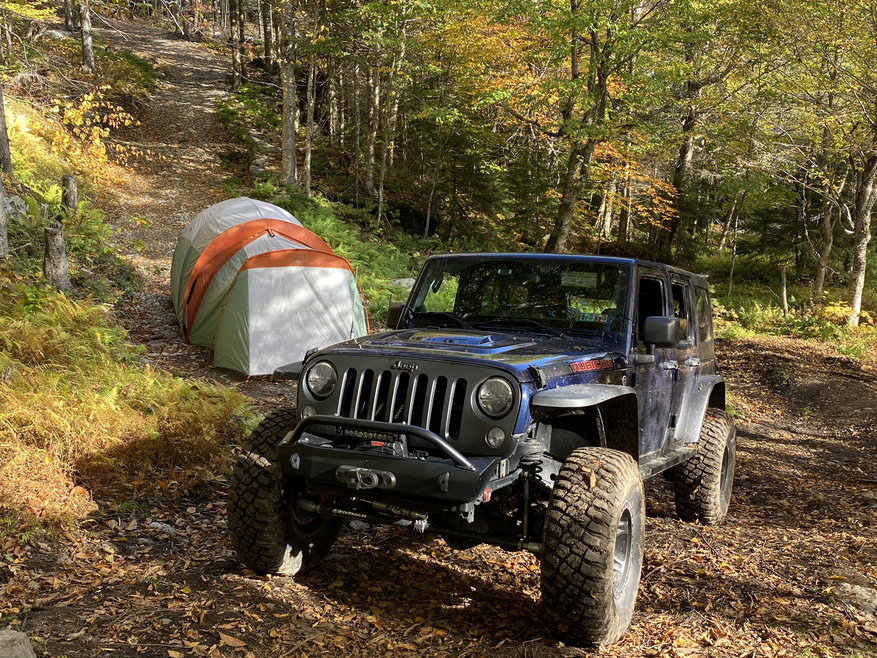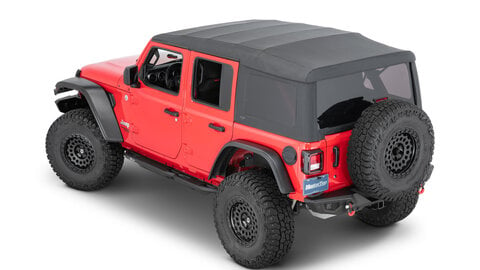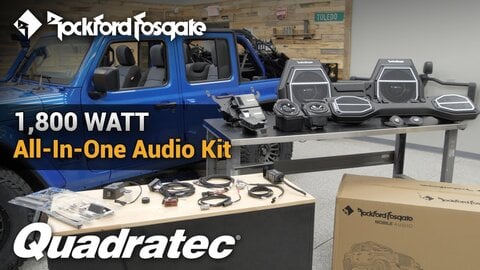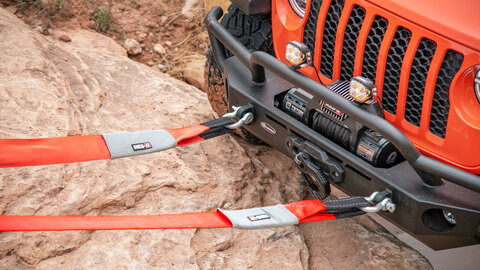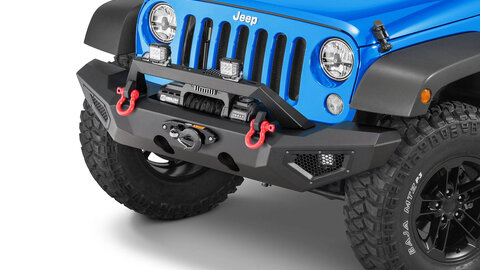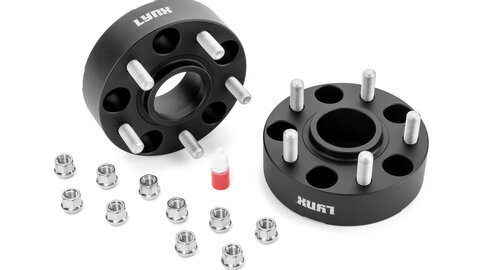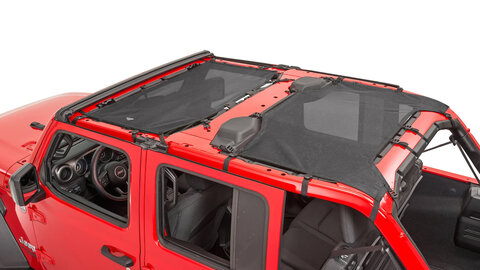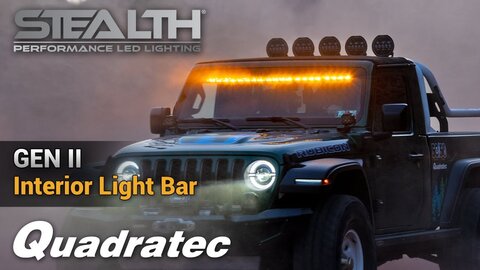by Scott Ammerman
Torque Correspondent
Lots of people are going farther and farther off pavement these days searching for camping opportunities that not everyone can achieve. Obviously, your Jeep vehicle is very well suited for these types of expeditions, and you may already have friends into the entire overlanding experience — even on a casual basis.
So if you are planning on making your own overlanding trip, here are some things you should know before heading out into the wild.
First and foremost, it is essential that you construct a plan and let someone know where you are going and when you intend to return. Failure to do so has been disastrous in a number of instances recently, when help did not arrive in time to rescue the individuals in question.
Your overlanding plan should include everything that the U.S. National Park Service recommends on its list of ‘Ten Essentials’ that covers first aid and emergency items highly recommended during any overlanding expedition. At minimum, I keep all of these items in my vehicle at all times. Additionally, we also have a few additional overlanding-specific recommendations that are important for anyone.
Here is what you need to know:
Navigation
Navigation is how we determine both where we are in the world, as well as where we are going. This is not limited to the use of smartphone GPS programs, or your factory/aftermarket navigation system in your vehicle. It is crucial to understand where you are at all times, because you can’t always rely on your vehicle’s navigation system, or you smartphone’s cellular network. If you know your trip is headed into some remote areas, where you could lose service, make sure to carry paper maps so you’ll always have a good sense of your location.
Sun Protection
You can’t always rely on your vehicle for total sun protection when headed out into the woods. Even though many overlanding trips or 4x4 adventures are through areas where there are plenty trees overhead, there is always the possibility you may need to be out of your vehicle for some time in direct sunlight.
This is especially true of trailside repairs, a hike out of the wilds following a mechanical breakdown, or even a leisurely side hike. Sunglasses should not be overlooked either when venturing out into areas with sun glare, as these can prevent long-term eye damage. A hat and sunscreen are certainly wise additions to your kit for these types of trips. Likewise, breathable, long sleeve clothing with a high Ultraviolet Protection Rating (UPF) is essential in desert climates.
Insulation
Depending on how far off grid you intend to travel, you may want to bring along clothing that offers more of an assortment of layers for the journey.
Cotton, long marketed as ‘the fabric of our lives’ is usually not the best choice for outdoor clothing. For starters, it does a horrible job of insulating your body if it gets wet from precipitation or sweat. Instead, merino wool and polypropylene base layers are a good idea for any outdoor activity in the colder months, but they also keep you feeling less clammy when it's hot out. I know merino wool sounds like a bad idea in the summer, but its odor elimination properties and moisture wicking are fantastic — wear merino socks every day of the year.
With whitewater boating, we have an often repeated saying: “dress for the swim”. This essentially means, be prepared for the possibility of everything going wrong, and ending up in the water instead of your boat.
In the case of overlanding, it is definitely advisable to dress for the possibility of spending an unexpected night in the bush, or having to walk somewhere if things go horribly awry. Don’t depend solely on the heater or air conditioning in your vehicle, or the shelter the Jeep provides. Bringing along an insulated jacket and a rain jacket with you, at minimum, is a good idea. If something goes sideways, you might have to leave your vehicle, so have a backup plan. At the very least, a temporary breakdown might put you out in the elements for a while. Hiking boots, a spare pair of socks, and even backup footwear in case of an unexpected muddy or wet adventure is a solid plan. Shoes often take many hours to dry, and they do it a lot faster without your feet inside.
Illumination
If you are planning a multi day overlanding trip, you’re going to be in the dark for some of that time. Obviously, vehicle mounted lights are great, but they don’t keep you from walking over rocks around camp, or help you dig to the bottom of that backpack in the pitch black darkness.

At camp, flood and spot beams have different uses, just as they do with Jeep lighting. I like to carry two flashlights, and a system that lives in the Jeep full time like the Quadratec Flashlight and Holder set is a good choice for most uses. Just remember to bring along a spare set of batteries.

I also recommend carrying a high quality rechargeable pocket light like the Rigid Industries RI-600 LED Flashlight, as it can be recharged on 110v as well as with a 12v lighter socket in the middle of your trip if needed. The included 18650 Li-Ion battery is replaceable if it ever fails to hold a charge, and the extremely rugged housing is sealed against the elements as well as drops. The 680 lumen spot beam reaches out over 500 feet if you need to see where that noise just came from in the dead of night.

Another versatile choice for trailside repairs, as well as around camp (or even in the garage), is the ARB Adventure 600 LED Light. This light works very well as a magnetic drop light, and also has two fold out hooks to hang from an awning, your tailgate glass or a tree branch.
First Aid Supplies
First aid supplies are absolutely crucial to the success of any outdoor adventure. Being prepared for minor (and especially major) emergencies will give you peace of mind knowing you can handle anything from scrapes and cuts to cooking burns, or even strains and sprains.

A good basic assortment right out of the box is the Mopar First Aid Kit that Jeep assembled for the JL Wrangler and JT Gladiator models. But this kit can work well for any overlanding setup. Components are well organized in the durable zippered case, and there is extra room for additional things like medications if you need to travel with them. It even comes with a basic first aid and CPR guide. However, if you’re planning on being the primary first aid provider for your group, there is no substitute for proper training through a certified instructor.


If you prefer to set up your own kit, the Overland Vehicle Systems Canyon Bag Rolled First Aid Storage Tote is a hot new item. And with a durable waxed canvas coating, roll up design and MOLLE straps on the rear, you have plenty of mounting options available. Please note, though, that this kit does require you to purchase your own first aid items.
Fire!
Fire can be essential to survival, especially when cold overnight temperatures start creeping into the campsite. Emergency firestarters, matches or a lighter at minimum are a very good idea as part of your preparedness plan, but also for lighting camp fires where allowed — please check regional and seasonal regulations with regard to camp fires.

One thing we’ve found particularly useful on trips where open wood fires are prohibited is the Heininger Portable Outdoor Fire Pit. Even though a permit may be required in certain parks or public lands to use this item, it allows for a little more fire safety in places where a wood fire was not allowed. You can find more information on this in our Heininger Portable Outdoor Fire Pit review.
Repair Kit/Tools
There have been times while broken down in the woods that I wished I had my six-foot-tall Snap On rolling tool cabinet with me. Obviously, that’s not feasible under most circumstances.

Instead, keeping a basic tool kit on hand while overlanding is essential — especially tire repair tools. While you can’t take everything with you on a trip, we did recently compile a list of eight essential items for off-road adventures.

In addition to those items, I would also recommend sturdy cable ties, duct tape and a fixed blade knife like the Smittybilt T.A.S.C Trail Knife with Sheath. I always carry a multi-tool in my pocket, and it has gotten me out of a lot of jams, but when you need a knife, a real one is a much more durable bet.
Nutrition/Food
I love food. I eat it nearly every day, and if you’re reading this, I imagine you do as well.

Cooking in the outdoors is a very storied endeavor, and from the standpoint of emergency preparations for your overlanding trip, we recommend bringing extra non-perishable food with you on every trip — things that requires little to no preparation time, provide a burst of calories and are easily portable. In the event you have to leave your vehicle, you will need something easy that requires no refrigeration or cooking. Granola bars, nuts, trail mix and even fruit are great for this.

Torque will be detailing a lot more information on this aspect of overland travel in the future, as we plan to keep eating food while we’re on our adventures, for obvious reasons.
Hydration
I suppose this goes without saying, but water is an essential key to survival. When overlanding, particularly for several days, the recommended amount of two gallons per person, per day, is very hard to carry in disposable bottles. Bulk water storage is crucial to a successful trip, and having it in something durable that can handle being knocked around on rough trails is important as well.
A couple of Crown Automotive Five Gallon Water Cans will last you and a small crew at least a weekend without refilling, and are food-grade polyurethane lined to prevent corrosion contamination.

In addition to my other water carriers, I have several Rotopax Two Gallon Interlocking Water Cans that I mount on the Rotopax Mounting Bracket of my Hyline Offroad Ridgeline Tire Carrier bumper (which is a great setup for an overlanding rig, as well as a dual purpose rock crawler). I carry one additional can of water in the vehicle, which is strapped to the roll bar.
I could also use a Rotopax Two Gallon Interlocking Fuel Can instead, but I’ve found that I’ve needed way more water than fuel on my recent trips.
Shelter

For your first overlanding trip, you do not need to purchase a roof top tent to get out there and camp. In fact, if you have a dog with you like I always do, sometimes sleeping on the ground makes more sense.

Whether you’re sleeping in a roof top tent, minimalist camping in the trunk of your Jeep, or ground camping in a tent, you are probably going to want some cushioning or insulation underneath your sleeping bag. Many RTTs come with a mattress already inside, which is nice, but if you do not have one then definitely pick up an inflatable mattress or cushion. Not only will it make things more comfortable at night, but it will shield you from the cold. When the weather is on the colder side, that chill can just radiate right up through you, especially while the insulation of your sleeping bag is compressed. Mattresses not only cushion you from the rocks and roots below you, but also keep you warm by creating a temperature barrier.
A sleeping bag that is rated for at least 10-15 degrees below the expected overnight low is a good idea as well. I have been camping with people who used the old 45 degree flannel lined bags, and they look absolutely pale and miserable in the morning. Those type of bags are great in a cabin, but not so much in a tent. They also soak up moisture like a sponge.
After having to treat mild hypothermia a few times in other campers, I try to always make sure my overlanding partners have the right sleeping gear before nightfall — because loaning them an extra blanket might help bypass a medical emergency. In the warmer months, air flow is a welcome addition and I always bring a battery powered fan to keep air circulating inside the tent, as well as a lighter sleeping bag or synthetic insulation blanket.

It is also an excellent idea to bring along some type of emergency shelter in addition to a tent. Even with the most durably built and well thought out overlanding rigs, disaster can strike. If your plan is to camp in your roof top tent, but you have to leave the vehicle for some reason, an emergency shelter is definitely a good backup plan. I normally carry a two person backpacking tent even when I’m using an RTT, just in case we can’t camp near the vehicle, which has happened.
Even a ‘tube tent’ or a tarp is a good substitute when the alternative is weathering a storm with no protection. Safety is paramount when traveling the wild, so being prepared makes all the difference in the world.












